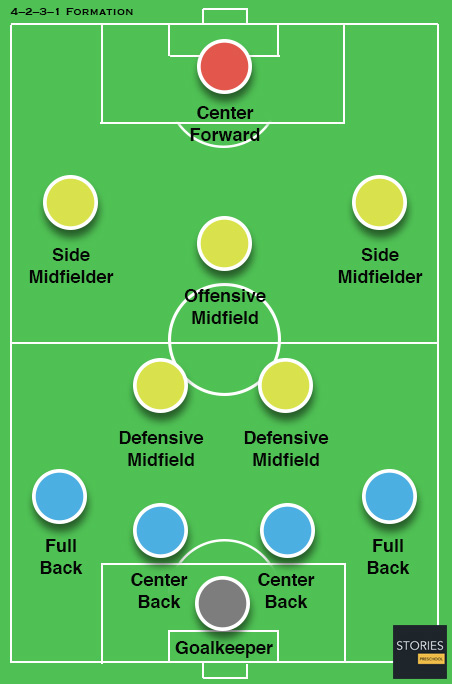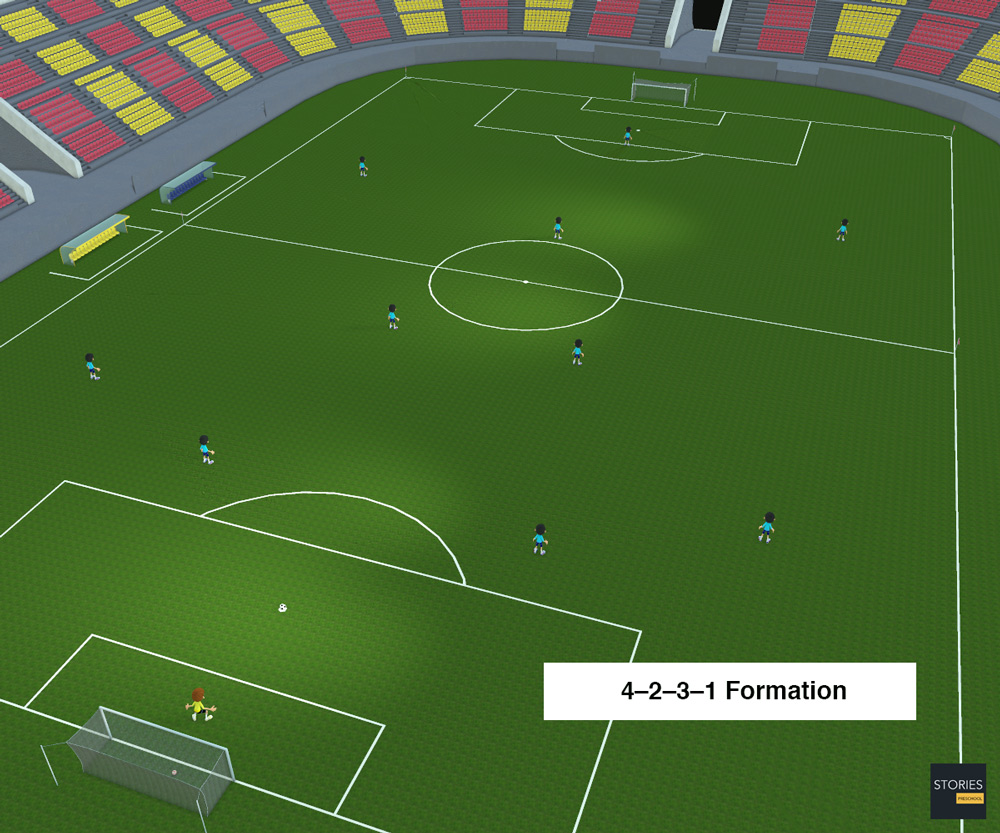Soccer

4–2–3–1 Formation
This formation is widely used by Spanish, French and German sides. While it seems defensive to the eye, it is quite a flexible formation, as both the wide players and the full-backs join the attack. In defense, this formation is similar to either the 4–5–1 or 4–4–1–1. It is used to maintain possession of the ball and stopping opponent attacks by controlling the midfield area of the field. The lone striker may be very tall and strong to hold the ball up as his midfielders and full-backs join him in attack. The striker could also be very fast. In these cases, the opponent's defense will be forced to fall back early, thereby leaving space for the offensive central midfielder. This formation is used especially when a playmaker is to be highlighted. The variations of personnel used on the flanks in this set-up include using traditional wingers, using inverted wingers or simply using wide midfielders. Different teams and managers have different interpretations of the 4-2-3-1, but one common factor among them all is the presence of the double pivot. The efficiency and the compactness that the double pivot provides makes it vital to have in the modern game. The double pivot actually is the usage of two holding midfielders in front of the defense.

At the international level, this formation is used by the Belgian, French, Dutch and German national teams in an asymmetric shape, and often with strikers as wide midfielders or inverted wingers. The formation is also currently used by Brazil as an alternative to the 4–2–4 formation of the late 1950s to 1970. Implemented similarly to how original 4–2–4 was used back then, use of this formation in this manner is very offensive, creating a six-man attack and a six-man defense tactical layout. The front four attackers are arranged as a pair of wide forwards and a playmaker forward who play in support of a lone striker. Mário Zagallo also considers the Brazil 1970 football team he coached as pioneers of 4–2–3–1.
In recent years with full-backs having ever more increasing attacking roles, the wide players (be they deep lying forwards, inverted wingers, attacking wide midfielders) have been tasked with the defensive responsibility to track and pin down the opposition full-backs.
This formation has been very frequently used by managers all over the world in the modern game. One particularly effective use of it was Liverpool F.C. under Rafael Benitez, who deployed Javier Mascherano, Xabi Alonso and Steven Gerrard in central midfield, with Gerrard acting in a more advanced role in order to link up with Fernando Torres, who acted as the central striker. Another notable example at club level is Bayern Munich under Jupp Heynckes.

SPORTS

RESOURCES
This article uses material from the Wikipedia articles "Association football" and "Formation (Association football)", which is released under the Creative Commons Attribution-Share-Alike License 3.0.
© Stories Preschool. All Rights Reserved.












